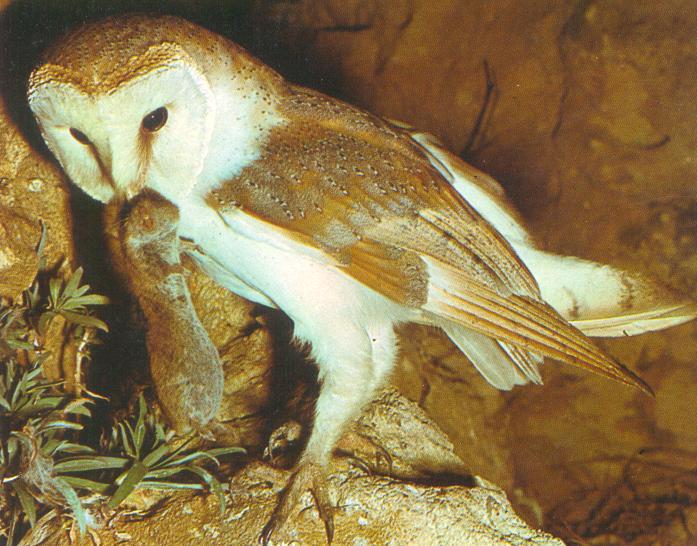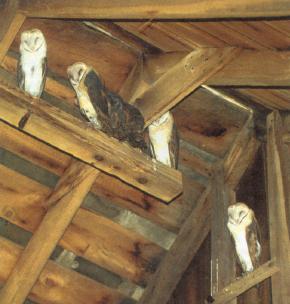Barn Owl
Hauntingly Beautiful

Tyto alba

Speaking of ghosts.... Barn owls are probably responsible for nearly all the early legends of ghosts in the attics of early American farmhouses.  Barn owls used to be indigenous to what is now the United States, so European settlers had never seen anything like it. Young barn owls tend to be very noisy (unlike the silent adults), jumping and tumbling over roof supports in the attics of early farmhouses. Could you imagine being a seventeenth-century settler, a stranger in a strange land, investigating strange sounds in your attic by candlelight, and encountering one of these things? Or looking out your window and seeing one zipping straight at you, making absolutely no sound at all? Why, I'd probably faint dead away! No wonder every old house from coast to coast is considered haunted!
Barn owls used to be indigenous to what is now the United States, so European settlers had never seen anything like it. Young barn owls tend to be very noisy (unlike the silent adults), jumping and tumbling over roof supports in the attics of early farmhouses. Could you imagine being a seventeenth-century settler, a stranger in a strange land, investigating strange sounds in your attic by candlelight, and encountering one of these things? Or looking out your window and seeing one zipping straight at you, making absolutely no sound at all? Why, I'd probably faint dead away! No wonder every old house from coast to coast is considered haunted!
Today, the barn owl ranges over the entire United States, as well as most of South America and Africa (except in the deserts and densest of jungles), all of Europe, India, and Australia. However, in their home range, their numbers are plummeting. Use of rodenticides are resulting in the deaths of hundreds of barn owls, who eat pesticide-laden mice and voles and later suffer death, or lay eggs with extremely thin shells which break simply from brushing against them. Several programs are in place across the country to breed these silent predators and release them into the wild.
The barneys seen at left are young ones bred at a special enclosure at Moraine State Park north of Pittsburgh, Pennsylvania. It's proven to be a very successful programm, with 96 owls released so far and a total of 1,000 anticipated to be released over the next ten years. Very exciting. I'm certainly keeping a close eye on this program, because I've never seen a barn owl in the wild -- only in zoos.